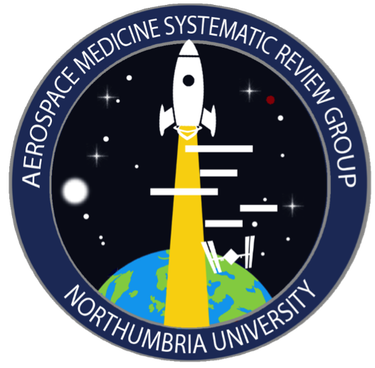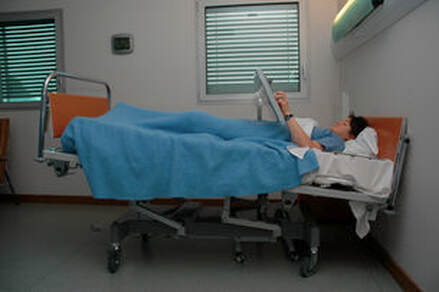Dr Andrew WinnardLecturer in Clinical/Musculoskeletal Biomechanics; Lead for the Aerospace Medicine Systematic Review Group; Chartered Physiotherapist; Faculty of Health and Life Sciences, Northumbria University  This was a question that the European Astronaut Centre space medicine office asked the Aerospace Medicine Systematic Review Group (AMSRG). With space agencies planning missions beyond low Earth orbit, in spacecraft that might not be as easy to exercise inside as the International Space Station, this question is becoming more relevant. While it is clear that countermeasures are needed to maintain muscle during microgravity exposure, there were questions such as ‘should we really be going to the Moon without exercising?’; ‘can we safely have pauses in countermeasures during Earth-Mars transits?’; and ultimately ‘how long can humans go in microgravity, without exercising, before the muscles seriously decondition?’.  Bedrest study image: © ESA Bedrest study image: © ESA There appeared to be some information available in the research base but no clear and transparent synthesis existed on which to make evidence based medical decisions. The AMSRG, led by Prof Nick Caplan, Dr Rochelle Velho and myself, based at Northumbria University’s Aerospace Medicine and Rehabilitation Laboratory, is all about working with spaceflight operations to provide high quality, evidence based medical guidance and, therefore, we took these questions on readily. It was determined that if data from inactive/no intervention control groups within any study done with astronauts or bed rest participants could be extracted, it would provide the evidence based information on which to inform the questions being asked. The team worked for almost two years, screening 754 potential studies, before extracting data from control groups of 75 individual included sources, to calculate 922 individual effect sizes, making this the largest review the AMSRG has conducted to date. All the included studies were from bed rest, ranging from 60-120 days, with mostly high risk of bias (using Cochrane’s risk of bias tool) and typically scoring 4 out of 8 for bed rest quality (using AMSRG’s bed rest quality tool). Across all the studies the team found that moderate deconditioning effects (effect size ≥0.6) occur between 7-15 days, with large deconditioning effects (effect size ≥1.2) occurring by 28 days. Based on this, it seems that a 5 day Earth-Lunar transit period is probably safe to complete without exercise, at least for the skeletal muscle outcomes. However a Mars transit, that is likely to be 200+days, needs to counteract muscle deconditioning if the crew is to arrive and be able to function in a gravity loaded environment. Additional consideration was given to ‘worst case scenarios’, such as if there were a crew member more susceptible to low gravity induced muscle changes, for which the team used the most extreme negative end of the confidence intervals as a model. In these cases, a large deconditioning effect could be reached by 7 days and then even the travel time to the Moon could potentially become problematic. However, this model is rather crude due to large confidence intervals caused by the typical low sample sizes in human spaceflight research, and individual effects are difficult to determine in a way that is easily transferable to astronauts. Over the whole evidence base, there was great variety in outcome measures and time points evaluated across studies, along with limited data for all outcome measure subgroups, with research gaps highlighted in the published review’s results tables. No patient reported outcome measures of minimal clinical worthwhile changes were established that would help provide a more patient-centred approach to space medicine. This has been a common finding in AMSRG reviews. While space agencies require astronaut simulating bed rest studies to be done to set standards, it might be useful to try and establish a list of core outcome measures that would benefit human spaceflight operations, to become a foundation for patient-centred space medicine and to standardise the data presented to the field as a whole.
Comments are closed.
|
Welcometo the InnovaSpace Knowledge Station Categories
All
|
InnovaSpace Ltd - Registered in England & Wales - No. 11323249
UK Office: 88 Tideslea Path, London, SE280LZ
Privacy Policy I Terms & Conditions
© 2024 InnovaSpace, All Rights Reserved
UK Office: 88 Tideslea Path, London, SE280LZ
Privacy Policy I Terms & Conditions
© 2024 InnovaSpace, All Rights Reserved
 RSS Feed
RSS Feed